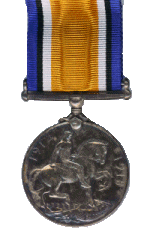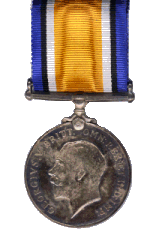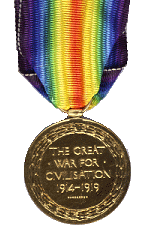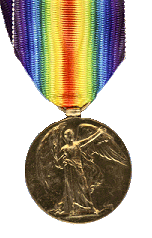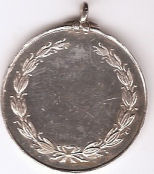26th
Middlesex Bn badges (the 26th became the 25th London Bn in 1908)
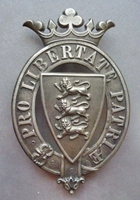 |
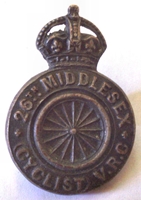 |
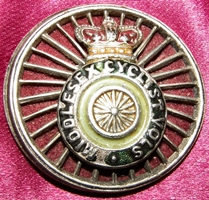 |
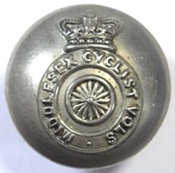 |
26th Middlesex Rifle Volunteers NCO
Pouch Badge - post 1908 |
|
|
Button |
25th County of London (Cyclists)
Bn badges.
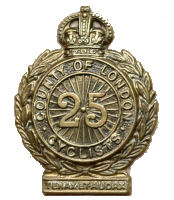 |
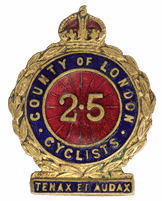 |
 |
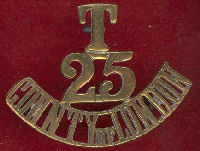 |
| |
|
Shoulder Badge |
Shoulder Badge |
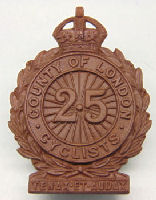 |
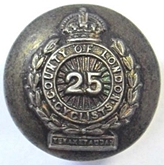 |
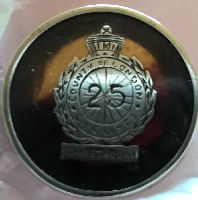 |
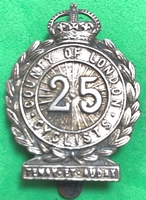 |
| Bakelite or resin badge |
Button |
Silver & tortoiseshell |
White metal badge |
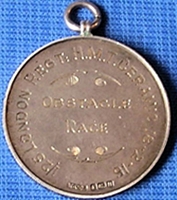 |
|
|
|
| Obstacle Race medal |
|
|
|
|

(Pagri Flash) |
1/25th London Cyclist Bn. Battle Badge (Cloth badge with
circle as above)
When war broke out the only insignia worn on uniforms was shoulder
titles and cap badges. Divisional symbols / insignia existed after the
first few months and were painted on vehicles / buildings etc. As the
war progressed to thwart enemy intelligence and to make units more
identifiable battalion badges / patches were introduced and took the
form of symbols / geometric designs images etc.
By the end of the
war units could be seen with patches unique to their battalion, brigade
patches and Div patches. Worn on uniforms (upper sleeves, back of
tunics below collar and on helmets).
Not every unit had them and
not all have been recorded.
Cap badges and shoulder titles were
never discarded though. For raids these metal titles badges were removed
and the cloth patches would ID a soldier to a friend but not the enemy. |
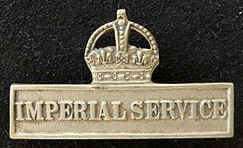
Imperial Service Badge |
|
The Imperial Service badge was awarded to those members of the
Territorial Force who were prepared to serve outside the United
Kingdom. The conditions of enlistment for the TF laid down at their
creation in 1908 did not allow for soldiers to be sent for service
overseas against their will, as the TF was intended for home
defence. However, any man could volunteer for the Imperial Service
Section and serve abroad in times of war, which entitled him to wear
this badge. The badge was worn on the uniform immediately above the
right breast pocket, i.e. the opposite side to any medal ribbons.
See photo of Stanley Ridout. |
|

One of the 25th Londons known to have been issued with this
medal was Charles Albert Watts. |
|
The Territorial Force War Medal was a campaign medal awarded
to members of the British Territorial Force and Territorial
Force Nursing Service who served overseas in World War I. It is
the rarest of the five British Great War medals.
The
medal was established in April 1920 for award to members of the
Territorial Force and Territorial Force Nursing Service who
volunteered for service overseas on or before 30 September 1914,
and served overseas. They had to:
:- have been serving with
the Force on 4 August 1914; or
:- have completed four years
service with the Force before 4 August 1914 and rejoined on or
before 30 September 1914.
In addition provided they:
:-
undertook, either verbally or by written agreement on or before
30 September 1914 to serve outside the United Kingdom, such
agreement being operative after 4 August 1914, and
:- have
served outside the United Kingdom between 5 August 1914 and 11
November 1918 (both dates inclusive; the last date was in 1918
though the years on the reverse said 1914-19) and
:- did not
qualify for the 1914 Star or 1914-15 Star.
A total of
33,944 Territorial Force War Medals were awarded.This includes
227 to nurses[1] of the Territorial Force Nursing Service, the
only women to receive the medal. The numbers given to each
regiment varied widely. |
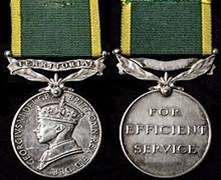
|
|
The Territorial Efficiency Medal (TEM) was a United Kingdom
award for long service in the Territorial Army. It superseded
the Territorial Force Efficiency Medal when the Territorial
Force became the Territorial Army in 1921. It was superseded by
the Efficiency Medal in 1930.
The medal was awarded to
non-commissioned officers and men for a minimum of 12 years
service in the Territorial Army, providing they attended 12
annual training camps. Previous service in other part-time
forces including the Territorial Force could count, while war
service counted double. Bars for further periods of 12 years
service were intended but never issued, since the medal was
superseded by the Efficiency Medal after 9 years.
The
equivalent award for commissioned officers was the Territorial
Decoration. A recipient could wear both awards together,
provided they completed the full periods of qualifying service
for each. |
|
|
Military Medal
|
|
 |
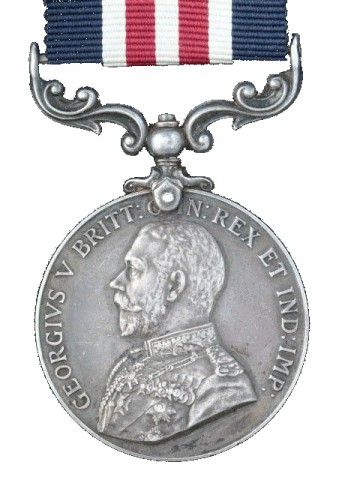
|
The Military Medal - was awarded for individual or associated acts of bravery.
At least one member of the Regiment was awarded this
medal - Signaller S. P. Chapman of 'B' company, for bringing in a
wounded comrade from a piquet under fire, during the Waziristan campaign
in 1917.
|
|
|
India General Service Medal
|
|
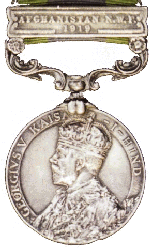 |

|
The India General Service Medal -
Afghanistan 1919, was issued to some servicemen from the 1/25th. However
the Medal Cards show that not all the soldiers of the regiment received
this medal. Some may have been in administration jobs, such as Harry
Parker, who in 1919 was pictured in a photo of the Field Revision Office
in Poona. His certificate of service list his occupation as a clerk from
7 Dec 1918 to Sept 1919 at the M.A. Depot, Poona. Persons interested in
knowing if their ancestor received the GSM need to obtain the relevant
Medal Card from The National Archives
or Ancestry. However I have
copies of many of the medal cards and I am happy to help if you email me
:-

The reverse side features the fortress of Jamrud, 'The
Gateway to the Kyber Pass'.
|
|
|
Silver War Badge
|
|
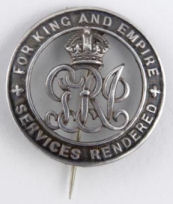 |
British First World War period 'Silver War Badge'. The badge was issued to British service personnel who retired or were discharged owing to wounds, ill health or having reached the age of 51. It was first issued in 1916 and continued until 1920.
|
|















